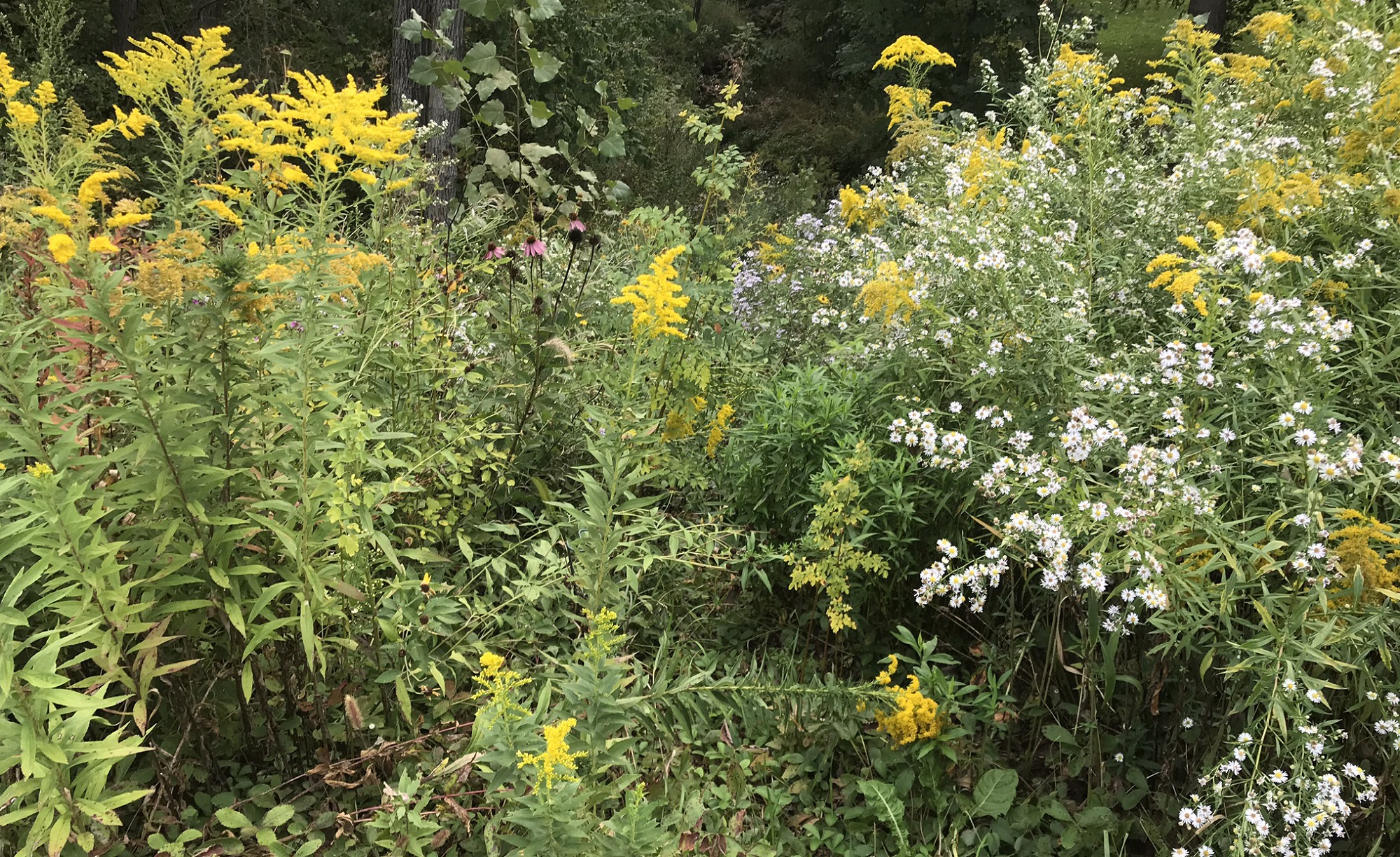Photo by Sheryl DeVore
The oft-maligned goldenrod won’t make you sneeze, but it will make you smile. This is the season of goldenrods—billowy yellow flowers that cover entire fields and little spaces here and there, including the Loch Lomond neighborhood. I have two types of goldenrod blooming in my yard
Once, I overheard a neighbor remark about all the yellow weeds that make you sneeze. It’s actually the native ragweed, with its inconspicuous white flowers, that makes hay fever sufferers want to stay indoors in September. Goldenrod species have sticky, heavy pollen that clings to insects that then carry the pollen to other flowers. There’s not much of an opportunity for the pollen to end up in your nose and make you sneeze. The pollen of ragweed, however, is light and easily transported by the wind into the air and, unfortunately, sometimes into your nasal passages.
About 18 native goldenrod species grow in the Chicago region. Most of these have long, woody stems with bunches of golden blooms—and many of them flower in September and October.
One of the goldenrod species in my yard is the native but unruly Canada goldenrod (Solidago canadensis). I wouldn’t recommend planting it because it takes over gardens. I do, however, have flat-topped or narrow-leaved goldenrod (Solidago graminifolia), which is shorter and quite lovely and doesn’t take over my garden, though I’ve heard it can do that. So far, so good.
One goldenrod species I’ve come to know and love is the stiff goldenrod (Solidago rigida), which grows well in dry, sunny places and can handle our clay soil very well. The name refers to its leaves that get a little stiff or rubbery as the plant ages. Showy goldenrod (Solidago speciosa) is another great goldenrod species that blooms in the fall. It has a feather-like plume of golden flowers attached to a red stem.
If you’re wanting some lovely color in your yard in September, October, and maybe even into November, consider planting some goldenrods. Seek them out at native plant nurseries, where folks can help you understand the growing needs of these lovely autumn blooms. They’re tricky to identify, and I’m just learning them now, so, if you prefer, just enjoy the maize-like hues adorning the Loch Lomond landscape.


Thanks, Sheryl! I had no idea there were so many different types of goldenrod. Love the education!